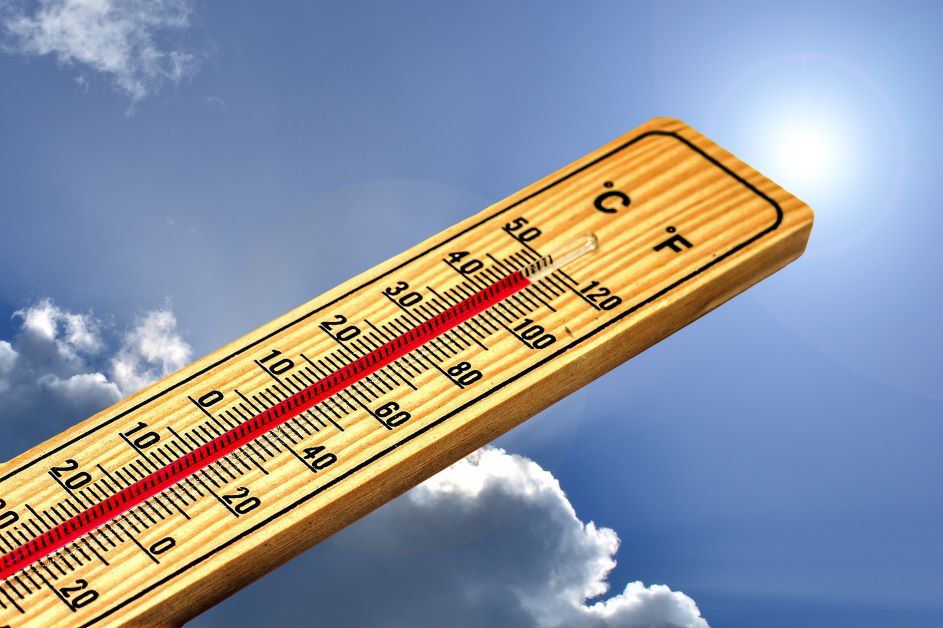Is It Too Hot In Florida to Use Metal Raised Garden Beds?
The soil in many parts of Florida is sandy and nutrient deficient. For this reason, a lot of gardeners opt to grow vegetables in raised garden beds instead of in the ground (myself included). There are tons of options when it comes to raised garden beds: wood, metal, plastic, bricks, stone, etc. It can be hard to know which type of garden bed to choose.
Whether you spend $100 or $1,000, raised garden beds are a significant investment. Cost aside, assembling a raised bed and planting a garden in it takes a lot of work – this isn’t a product that you can easily return if you aren’t happy with your purchase. For these reasons, it’s important to do some research before plunging into raised bed vegetable gardening.
Some of the most popular raised garden beds are made of galvanized metal, but is it too hot in Florida to use metal raised garden beds? The heat index in Florida frequently surpasses 100F during the summer, so it’s a valid question. Let’s dig in and see if metal raised garden beds get too hot to use in summer.
Do Metal Garden Beds Get Too Hot?
No, metal garden beds don’t get hot enough to hurt your plants. The metal does retain heat and the soil around the edges of your bed will be a little hotter than the soil in the middle, but the difference is negligible.
As an experiment, I used a 4-in-1 soil tester and took the temperature of the soil in 2 of my beds — one is a wooden bed and one is a galvanized steel bed. I tested the soil on the outermost edge of the beds because it would be the most affected by what the bed is made out of. Both beds are located in the same general area, get the same amount of sun, and the soil was dry in each. The soil in the wooden bed was 86°F while the soil in the metal bed was 88°F. The ambient temperature at the time these pictures were taken was 84°F.


This experiment isn’t perfect – the sample size is tiny and I didn’t measure the distance from the edge of the bed to the temperature gauge, but it’s interesting nonetheless. A 2°F difference in soil temperature isn’t going to affect much in the big scheme of things.
Fun fact! I took this reading on 07/10/2022 and other than my okra, hot peppers, and sweet potatoes, everything in my garden was dead. Only a handful of vegetables grow during the Florida summer.
Do You Have to Line Metal Garden Beds?
No, you don’t have to line metal garden beds. The only exception to this is if you’re growing a crop that needs especially acidic soil, such as blueberries. In fact, you should skip growing blueberries in metal altogether.
When galvanized metal holds something that’s very acidic, it can leach zinc. Zinc is a trace mineral that naturally occurs in soil and food. Humans require zinc to help support the immune system, but too much of it is toxic.
Galvanized steel will leach zinc when it’s in prolonged contact with a material that has a pH between 3 and 5.5. Blueberries require a soil pH of 4.5 to 5.5, so you shouldn’t grow them in a metal bed. Most fruits and vegetables, though, prefer a neutral or only slightly acidic soil pH.
Temperature is also not an issue when it comes to raised metal garden beds and zinc. Galvanized steel doesn’t start to leach zinc until it reaches a temperature of 392°F.
How Long Do Galvanized Metal Garden Beds Last?
A quality galvanized metal garden bed will last you a lifetime. Galvanized steel lasts between 34 and 170 years, even in the most extreme conditions.
Pros and Cons of Metal Raised Garden Beds
Pros to Metal Raised Garden Beds
Metal garden beds last a long time. Wooden garden beds, on the other hand, can rot in just a couple of years. This is especially true because you can’t use treated wood when building a raised garden bed – treated wood will leach toxic chemicals into your soil over time.

Metal garden beds are easy to assemble. Most of the time, the only tool you need to assemble a metal garden bed is a manual screwdriver.
Cons to Metal Raised Garden Beds
Metal garden beds lack customization. It’s true that metal raised garden beds come in many different shapes and sizes, but they aren’t as customizable as creating your own wooden garden bed from scratch.
Metal garden beds can be expensive upfront. It can be hard to start a plot of metal raised garden beds because of cost. Metal beds will save you money over time, however, because they’ll never have to be replaced.
Best Metal Garden Beds
Hands down, my favorite brand of metal garden bed is Sunnydaze. They’re affordable and come in a wide range of shapes and sizes. I don’t have a special affiliation with Sunnydaze, but I do have experience with their products – I have 7 of their 40-inch galvanized steel hexagonal raised beds in my front yard. Not only do my vegetables love these beds, but my neighbors do, too. I get tons of compliments on how cute these beds are.

When choosing a metal garden bed, consider size and depth. The deeper the bed, the more material you’ll need to fill it. Soil can be expensive, but practicing Hugelkultur can save a lot of money. Throw some logs, branches, hay, or oak leaf compost into your raised bed until you have 12 to 18 inches left to the top of your bed. Fill this 12 to 18 inches of space with soil and it’ll be plenty deep enough to grow your vegetables.







